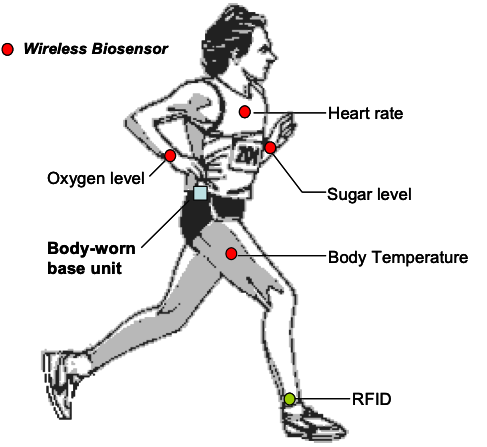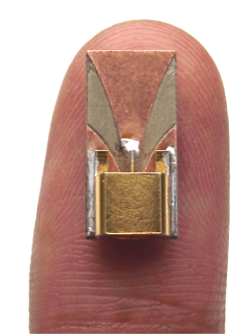Antennas and Radios for Localisation and Tele-control
Motion capture is being studied in many areas such as animation, health care, sport science, robotic tele-operation and human computer interaction. Currently, research on motion capture is mainly focused on activity detection and gesture recognition for relatively simple tasks. Few projects have attempted to provide the full body motion capture abilities required for biomechanical analysis, particularly during clinical motion analysis, physical rehabilitation and athlete training. In physiotherapy, motion capture systems allow continuous and accurate monitoring of physical activities, providing all important parameters of movement in order to evaluate the effectiveness of any exercises. The monitoring of athletes in sports such as athletics, gymnastics, golf, tennis and football, can provide detailed information to enhance athletic performance and reduce possible injury. However, the extra complexity inherent in full body movement capture has prevented cutting-edge systems being sufficient to fulfil these professional needs.
Ultra-wideband For Body Motion Capture and Sports Localisation Applications
Attempting to overcome the technological difficulties associated with inertial tracking, the Antennas group is very active on research projects related to new techniques to enable the development of a wireless full body motion capture system based purely on ultra wideband (UWB) electromagnetic transceivers/sensors arranged in a mesh or star network topology.

The Antennas Group has teamed up with many industrial partners some through Innovate UK and others through research contracts to tackle challenges associated with localisation and monitoring of human subjects and also associated objects in healthcare and sports performance monitoring setting. The partnerships explore how to read the motion of a human, and transfer this into commands for a robot, also how to capture objects in stadium and exercise settings and in hospital environments. with greater precision and reliability than existing methods.


Selected Research Grants and Projects
- UWB Antenna Front-end Solutions for Localisation and Tracking, Consultancy for Sportable Technologies Ltd., (Total of £15k, September 2019 – April 2020)
- MASH: Millimetre-wave AI-enabled Smart Healthcare monitoring, Innovate UK, QMUL and Lead by NodeNS Medical Ltd. (Total of £31k, February – September 2019)
- Technologies for Control of Advance Tele-robotic, Technology Strategy Board (TSB) Funded with the Shadow Robot Company (£150k, July 2013–June 2014)
- Ultra Wideband Localisation Techniques for Accurate Motion Capture Solution in Healthcare Monitoring Systems, QMUL funded PhD studentship (£80k, 2011–2014)
Selected Recent Publications
- R. Bharadwaj, S. Swaisaenyakorn, C. Parini, J. C. Batchelor, S. K. Koul and A. Alomainy, "UWB Channel Characterization for Compact L-Shape Configurations for Body-Centric Positioning Applications", in IEEE Antennas and Wireless Propagation Letters, vol. 19, no. 1, pp. 29-33, Jan. 2020, doi: 10.1109/LAWP.2019.2951836.
- R. Bharadwaj, S. Swaisaenyakorn, J. Batchelor, S. K. Koul and A. Alomainy, "Base-stations Random Placement Effect on the Accuracy of Ultra Wideband Body-centric Localization Applications", IEEE Antennas and Wireless Propagation Letters, vol. 17, no. 7, pp. 1319-1323, July 2018.
- R. Bharadwaj, S. Swaisaenyakorn, C. G. Parini, J. Batchelor and A. Alomainy, "Impulse Radio-Ultra Wideband Communications for Localisation and Tracking of Human Body and Limbs Movement for Healthcare Applications", IEEE Transactions on Antennas and Propagation, vol. 65, no. 12, pp. 7298-7309, Dec. 2017, doi: 10.1109/TAP.2017.2759841.
- R. Bharadwaj, C. G. Parini, and A. Alomainy, "Analytical and Experimental Investigations on Ultra Wideband Pulse Width and Shape Effect on the Accuracy of 3D Localisation", IEEE Antennas and Wireless Technology Letters, vol.PP, no.99, pp.1-1.
- R. Bharadwaj, C. G. Parini and A. Alomainy, "Experimental Investigation of 3D Human Body Localisation Using Wearable Ultra Wideband Antennas", IEEE Transactions on Antennas and Propagationvol. 63, no. 11, pp. 5035-5044, Nov. 2015.

